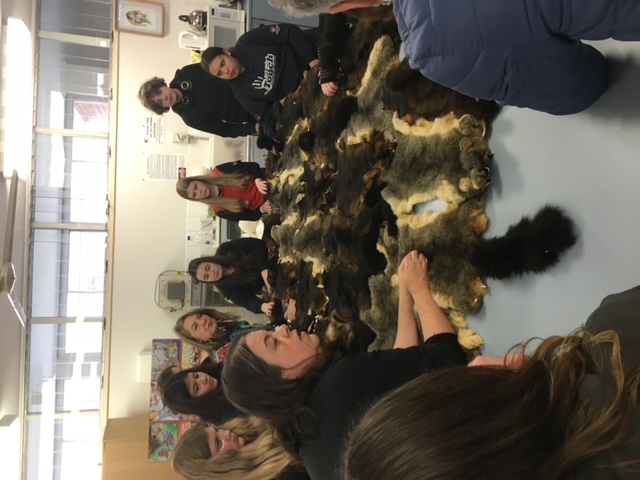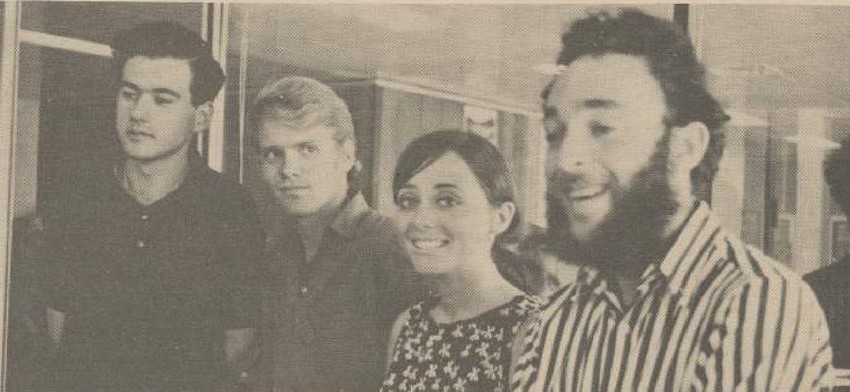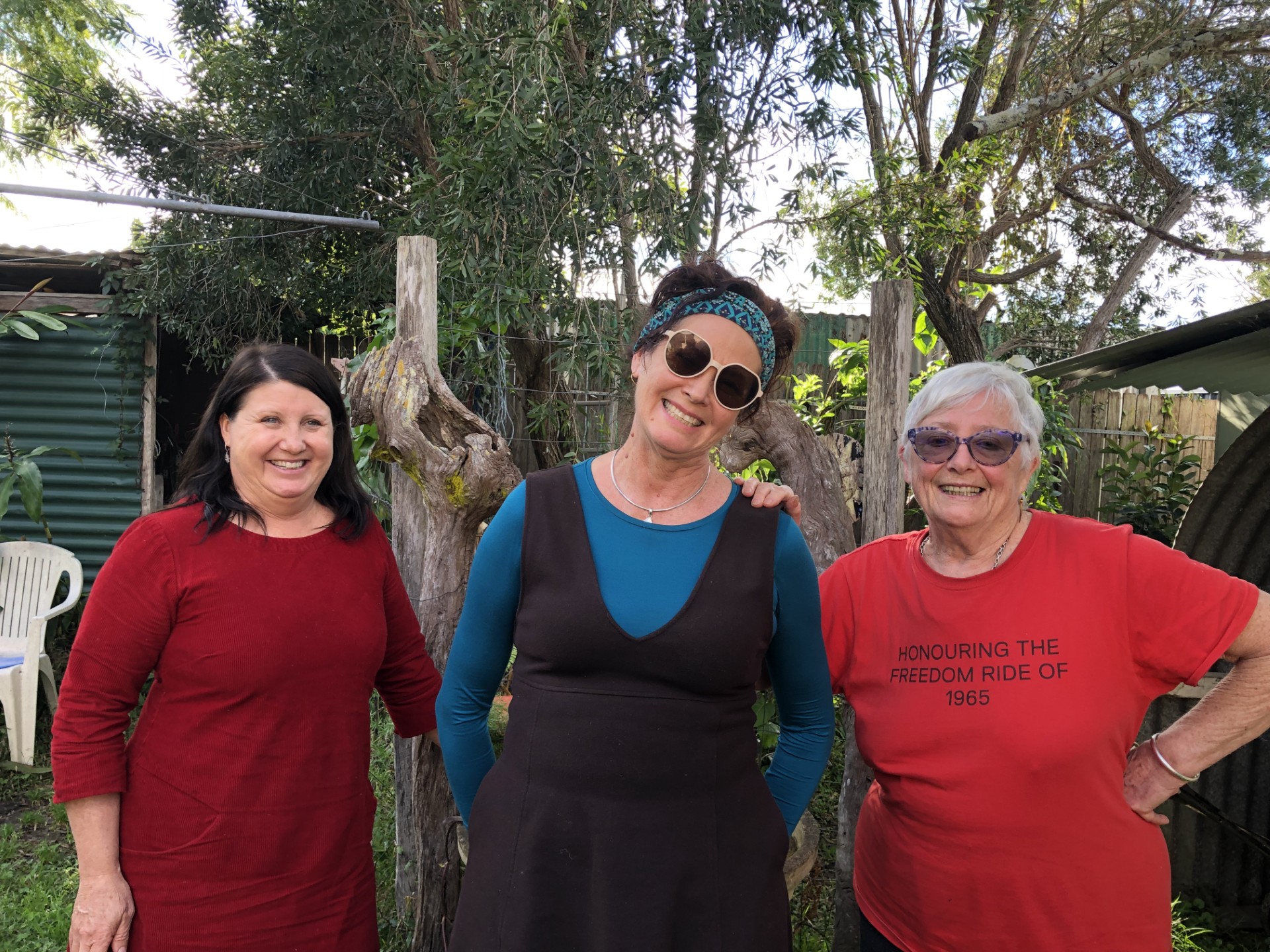Connections
Community connections on local and national levels
In 2021, an ARC Indigenous Discovery grant, Indigenous Storytelling and the Living Archive of Aboriginal Knowledge was awarded to the University of Melbourne to explore the potential of Indigenous Australian storytelling supporting interconnections which disrupt the linear structure of institutional archives. An interactive archiving system was developed which involved linking the Ngukurr community with collections held in Museums Victoria, Melbourne. Through this project, community members were able to explore the collection as well as providing advice on who should be able to view it. This exploration revealed a rich history of intercultural connection, collaboration and influence and provided the impetus for the revival of the making of feather flowers, a previously forgotten craft practice.
In 2022, as part of the project, Dr Daniels and Professor Senior worked with students and staff at the secondary school, Cook’s Hill Campus to create a major artwork based on Dexter Daniels’ activism and his time in Newcastle. Indigenous artist, Kerri Clarke, and her son, Mitch Mahoney, both experts in the art of making possum skin cloaks, led the workshops. They used the cloak as a medium to talk about Dexter Daniels’ work and to share their knowledge about all stages of construction of the cloak, from sewing though to creation of the dye and design. For a more detailed exploration and photographs of this activity go to the Purai website and scroll down to Exploring Indigenous Activism Through the Creation of a Possum Skin Cloak.
Another surprising discovery
In 2024, a surprising connection between Dexter Daniels and 1980s University of Newcastle (UoN) linguistics student, Nona Harvey. Nona first met Dexter at Roper River, NT on a fact-finding mission. She remembers him as one of “several impressive leaders at the community.” How Nona got to Roper River in the first place is a story that points to Dexter’s increasing influence through strategies which broadened his target audience. Nona was the local director of UoN’s ABSCHOL, one of the few nationally constituted bodies supporting people in the far north. The organisation was well positioned to provide substantial support on a national basis but ABSCHOL soon shifted its focus from raising money for university scholarships for Aboriginal people to include support for the land rights movement in its embryonic stage. In doing so, it drew the attention of the general public and politicians to what was happening in the Northern Territory.
On the 22nd of May in 1968, four students, Harvey and three other male ABSCHOL students from the University of Sydney, set off from NSW to learn more about the living conditions of Aboriginal people on cattle stations and the role of the Welfare Department in their lives.
Using social media, Professor Kate Senior and Dr Jacqueline Wright tracked down Nona Harvey and were invited to visit her Kempsey home to record her story. Harvey shared resources and told them about the trip – four students in a VW Bug travelling over 8,000kms.

"On the way north we got caught in floods around Winton and had to truck the car on a train, the only transport getting through. Then, stopping at a roadhouse in Katherine to eat, we noticed the front page article on the NT News titled SOUTHERNERS COMING TO HELP ABORIGINES INVADE TOWNS! When we looked at an accompanying cartoon with four students on a 'bandwagon’ we realised we were the ones being referred to! This jolted us out of our naïve complacency, and we knew we would have to proceed strategically. We planned to make a stand on the draconian permit system at the time, if we were able to achieve nothing else."
Harvey vividly recalls the clandestine nature of the tour with many detours made to avoid notice, often getting lost and, at times, greeted by men with rifles at the cattle station’s gates telling them to turn back. Her few days with Dexter Daniels at Roper River involved detailed discussions about issues both specific to the community (including their desire to get a grammar of their language developed) and the NT in general.

"The trip was nothing like I have experienced before or since and shaped and deepened my perceptions ... this other largely hidden world that coexisted with the white society I had been brought up in ... These experiences on the ground opened my eyes to the nature of the country I lived in and, to a large extent, shaped the course my life would take. Once my eyes were opened there was no going back on the path of what became an ever-deepening but never-ending learning experience about and with Far North people and an ongoing engagement in the struggle for their recognition, rights and self-determination."
The University of Newcastle acknowledges the traditional custodians of the lands within our footprint areas: Awabakal, Darkinjung, Biripai, Worimi, Wonnarua, and Eora Nations. We also pay respect to the wisdom of our Elders past and present.